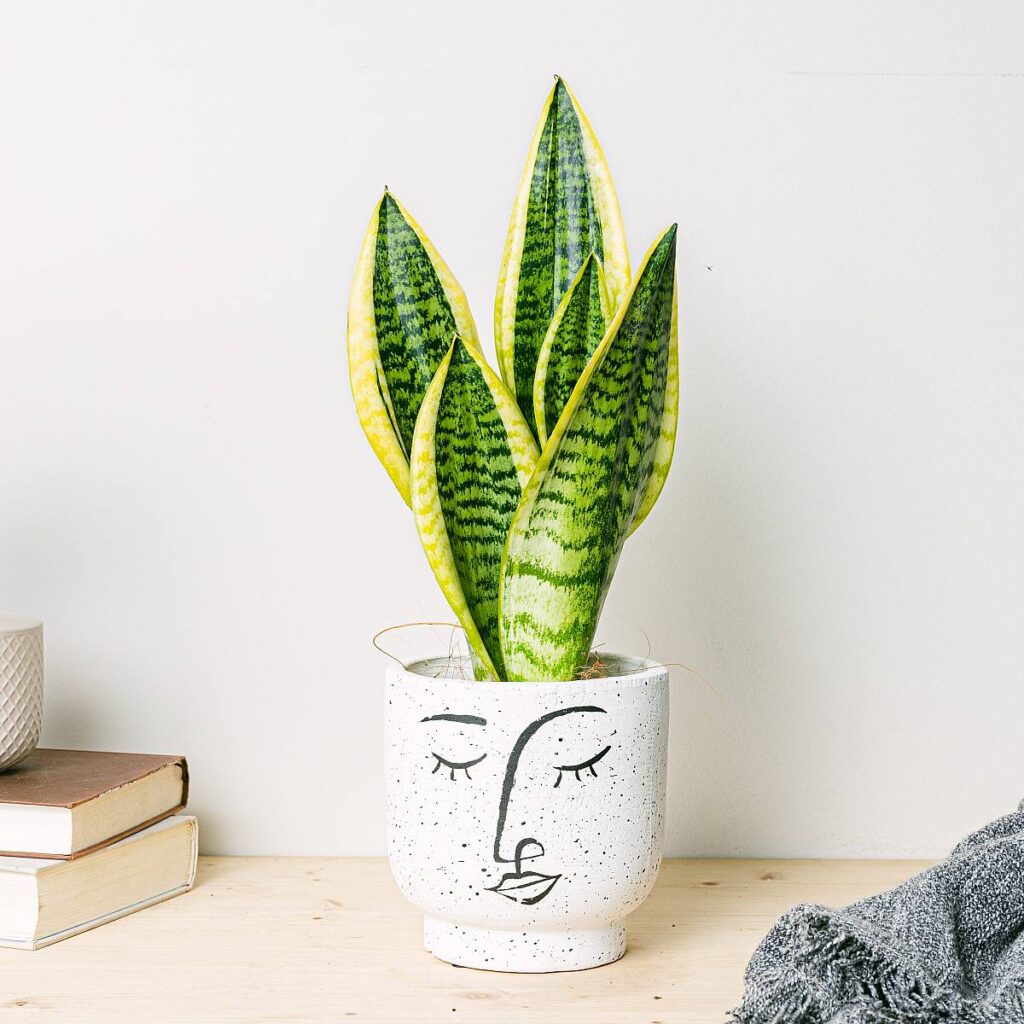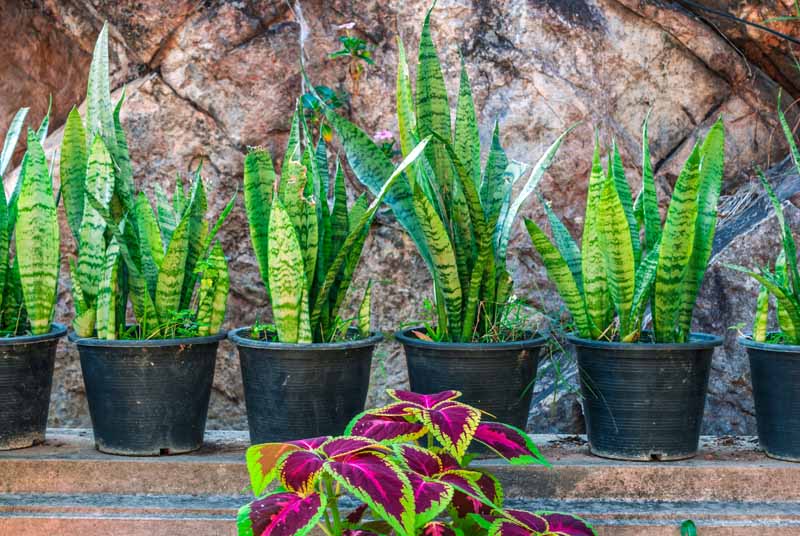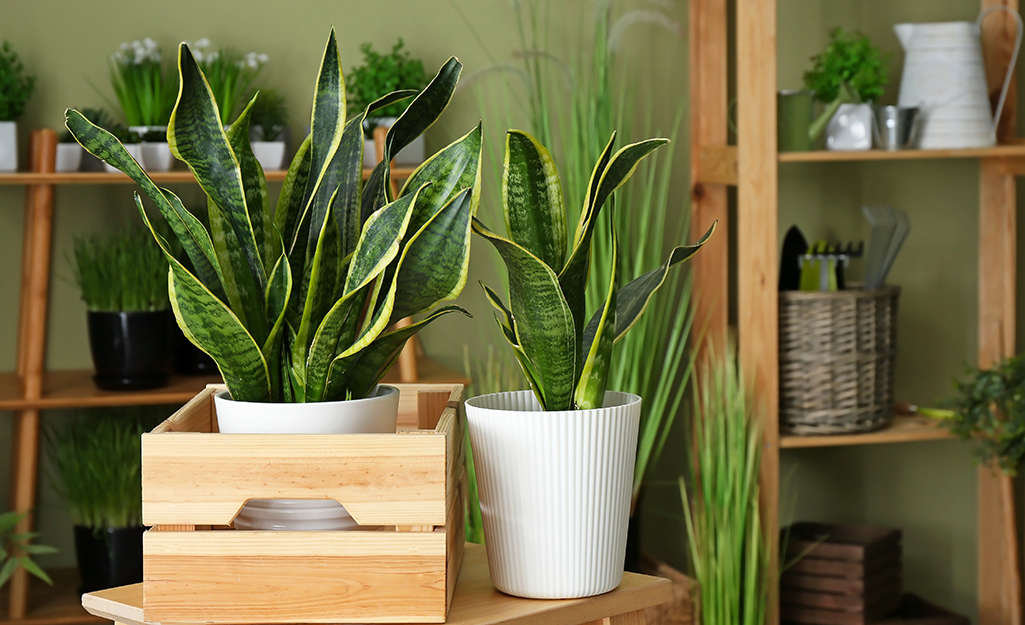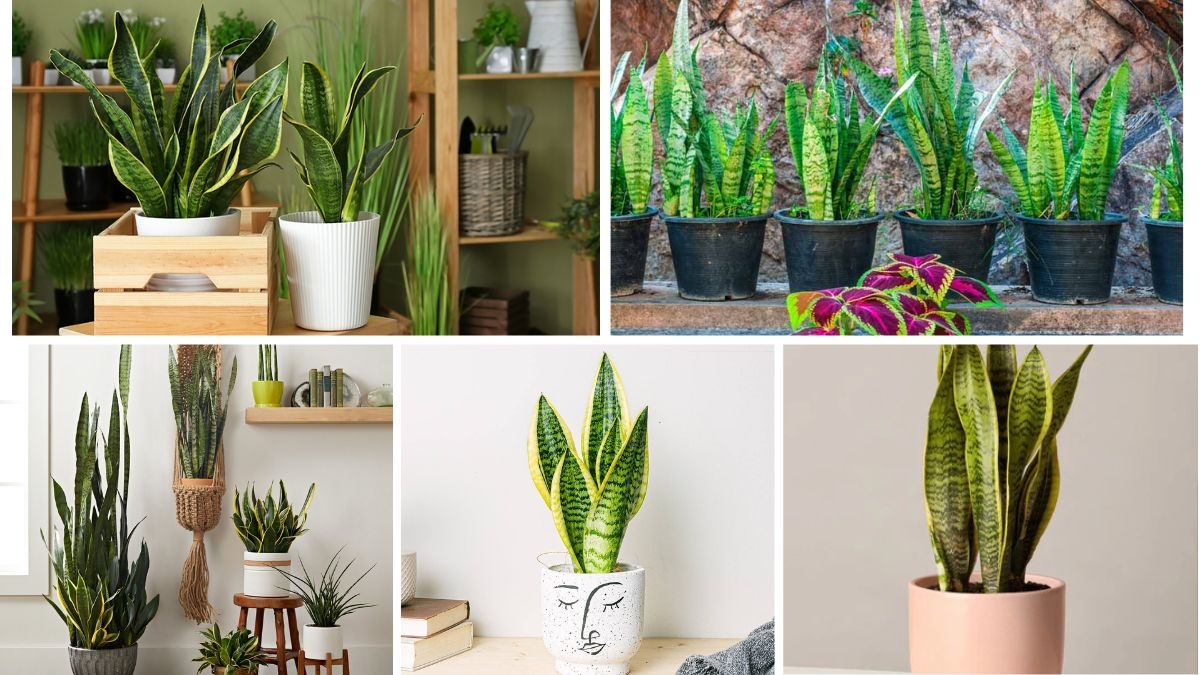Snake plants (Sansevieria), also known as mother-in-law’s tongue, are among the easiest houseplants to grow. With their tall, sword-shaped leaves and striking patterns, they add elegance to any space while demanding very little attention. But while they have a reputation for being “indestructible,” giving them the right care can make them thrive and look their best for years.
In this guide, we’ll cover everything from ideal lighting and watering techniques to repotting, pest control, and common problems — so you can care for your snake plant like a pro.
1. Understanding Your Snake Plant

Before you dive into care, it’s important to understand the plant itself.
Origin & Nature
Snake plants are native to West Africa, where they grow in dry, rocky environments. This explains why they tolerate neglect, low water, and a wide range of light conditions.
Varieties
Some popular types include:
- Sansevieria trifasciata ‘Laurentii’ – Yellow-edged leaves.
- Sansevieria cylindrica – Cylindrical leaves with a fan-like arrangement.
- Sansevieria ‘Moonshine’ – Silvery-green foliage.
Each variety has the same basic care needs, but knowing your plant type helps in understanding its growth pattern.
2. Choosing the Right Location

Snake plants are famous for adapting to low-light corners, but for faster growth and vibrant color, they prefer bright, indirect light.
Best Light Conditions:
- Ideal: Bright, filtered light near a window facing east or south.
- Tolerable: Low-light offices or shaded rooms (though growth will be slower).
- Avoid: Direct afternoon sun on delicate varieties, as it can scorch leaves.
Pro Tip: If your snake plant leans toward a light source, rotate it every few weeks for even growth.
3. Watering Like a Pro
Watering is where most people go wrong. Snake plants store moisture in their thick leaves, making them drought-tolerant.
Watering Guidelines:
- Spring & Summer: Water every 2–3 weeks, letting the soil dry completely between waterings.
- Fall & Winter: Reduce to once a month or even less.
- Check Soil: Stick your finger 1–2 inches into the soil. If it feels dry, water.
Common Mistake: Overwatering. This leads to root rot, the number one killer of snake plants.
Pro Tip: Always water thoroughly until water drains from the bottom of the pot, but never let the pot sit in standing water.
4. Soil and Potting Essentials

Snake plants thrive in fast-draining soil.
Ideal Soil Mix:
- 50% cactus/succulent mix
- 25% perlite or pumice (for aeration)
- 25% regular potting soil
Best Pot Types:
- Terracotta or unglazed ceramic pots allow moisture to evaporate faster.
- Ensure the pot has drainage holes — this is non-negotiable.
5. Feeding Your Snake Plant

Snake plants are light feeders, but occasional fertilizing boosts their health.
Fertilizing Tips:
- Use a balanced liquid fertilizer (e.g., 10-10-10) diluted to half strength.
- Feed once every 4–6 weeks during the growing season (spring and summer).
- Avoid fertilizing in winter when the plant is dormant.
Pro Tip: Over-fertilizing can cause brown leaf tips. Always stick to the “less is more” rule.
6. Pruning and Grooming
Pruning isn’t mandatory, but it keeps your plant looking neat.
When to Prune:
- Yellow, mushy, or damaged leaves.
- Overcrowded growth in the pot.
How to Prune:
- Use sterilized scissors or pruning shears.
- Cut leaves at the base without damaging healthy ones.
Extra Care: Wipe leaves with a damp cloth occasionally to remove dust and keep them glossy.
7. Repotting Without Stress

Snake plants prefer being slightly root-bound, so you only need to repot every 2–3 years.
Signs It’s Time to Repot:
- Roots are pushing out of the drainage holes.
- Soil dries out too quickly after watering.
- Leaves are crowded and growth is stunted.
Repotting Steps:
- Choose a pot 1–2 inches larger in diameter than the old one.
- Gently remove the plant and shake off old soil.
- Replant in fresh, fast-draining soil mix.
- Water lightly after repotting.
Pro Tip: Spring is the best time to repot so the plant can recover quickly.
8. Propagating Snake Plants
Propagation is a fun way to multiply your plant collection.
Methods:
- Leaf Cuttings in Soil:
- Cut a healthy leaf into 3–4-inch sections.
- Let cuttings callous for 1–2 days.
- Plant upright in moist, well-draining soil.
- Leaf Cuttings in Water:
- Place leaf segments in water, ensuring only the bottom part is submerged.
- Change water every few days until roots develop.
- Division:
- Separate root clusters (rhizomes) when repotting.
Pro Tip: Variegated varieties may lose their unique patterns when grown from cuttings; division keeps the exact look.
9. Temperature and Humidity
Snake plants thrive in average indoor temperatures between 60–85°F (15–29°C).
Avoid:
- Temperatures below 50°F (10°C).
- Cold drafts from windows or AC vents.
Humidity:
- Average household humidity is perfect.
- In very dry climates, mist occasionally to prevent leaf browning.
10. Pest and Disease Management
Snake plants are generally pest-resistant, but occasional problems can occur.
Common Pests:
- Spider Mites: Fine webbing on leaves.
- Mealybugs: White cottony spots.
- Scale Insects: Brown bumps on stems and leaves.
Solutions:
- Wipe with soapy water or spray with neem oil.
- Isolate infected plants to prevent spread.
Diseases:
- Root rot from overwatering is the most common issue.
- Use well-draining soil and avoid waterlogging to prevent it.
11. Seasonal Care Adjustments
Spring/Summer:
- Resume regular watering and feeding.
- Rotate plant for even growth.
Fall/Winter:
- Reduce watering significantly.
- Stop fertilizing until spring.
12. Common Problems and Solutions
| Problem | Cause | Solution |
|---|---|---|
| Yellow leaves | Overwatering or poor drainage | Water less, improve soil drainage |
| Brown leaf tips | Overfertilizing, dry air | Reduce fertilizer, increase humidity |
| Soft, mushy leaves | Root rot | Remove damaged parts, repot in dry soil |
| Wrinkled leaves | Underwatering | Water thoroughly and monitor moisture |
13. Benefits of Snake Plants
Caring for snake plants isn’t just about beauty — they’re also beneficial to your home environment.
Key Benefits:
- Air Purification: NASA studies show they remove toxins like formaldehyde and benzene.
- Low Maintenance: Perfect for beginners or busy lifestyles.
- Nighttime Oxygen Production: Ideal for bedrooms.
- Decorative Appeal: Fits modern, minimalist, and traditional décor styles.
Final Pro Tips for Snake Plant Success
- Less Water is Better: It’s easier to revive a thirsty snake plant than one with root rot.
- Bright Indirect Light = Faster Growth: Low light is fine, but growth will be slower.
- Clean Leaves: Dust blocks sunlight and hinders photosynthesis.
- Don’t Rush Repotting: Slightly crowded roots actually encourage healthier plants.






Leave A Comment